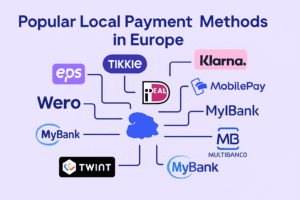Being labeled as a high-risk business can be intimidating. While some processors may decline your application outright, others choose to accept high-risk merchants but implement specific measures to offset the increased risk exposure. Understanding these differences is crucial when preparing for the application process.
Key Differences Between High-Risk and Regular Merchant Accounts
High-risk merchant account applications undergo significantly more scrutiny. Payment processors will request detailed information to thoroughly analyze your risk profile and financial history.
This typically includes comprehensive processing history from previous providers, detailed business partnerships and supplier relationships, personal credit history of business owners and executives, company financial statements spanning 3-6 months, and business plans with projected transaction volumes.
This enhanced due diligence process typically extends the approval timeline to 1-2 weeks versus 1-3 days for standard merchants.

Elevated Processing Fees
The cost difference between standard and high-risk processing is substantial.
Standard merchants typically pay interchange plus 2% per transaction, while high-risk merchants can expect interchange plus 5% to 10% per transaction.
These higher rates directly reflect the increased financial risk the processor assumes when working with businesses in volatile industries or those with higher chargeback potential.
Cash Reserve Requirements
Payment processors often ask businesses to set aside a percentage of sales as a safety net. With a rolling reserve, they hold 5-10% of each transaction for about six months. For example, if you make $1,000 in sales in January, $100 will be held until July.
In a capped reserve, a percentage is held until a certain amount, like one or two months of sales, is reached. After that, no more money is held, but the reserve stays in place.
An upfront reserve requires a lump sum to be paid before you can start processing payments, and sometimes, the processor holds all funds until that amount is met.
High Chargeback Fees
Businesses in high-risk industries face much higher fees for chargebacks. While regular merchants pay about $15-$25 per chargeback, high-risk businesses can pay $25-$100.
This is especially tough for industries with a lot of returns. To reduce these fees, you need strong strategies to prevent chargebacks.
Monthly Processing Limits
To protect themselves, processors often set limits on how much you can process each month. They also monitor transactions for unusual activity.
If you exceed the limit or show suspicious patterns, the processor might freeze your account or hold your funds without warning.
💡 Interested in learning more about what’s included in a typical high-risk merchant account? View our complete breakdown of FastoPayments’s high-risk merchant accounts.
What You Need to Secure Approval as a High-Risk Merchant
Securing approval for a high-risk merchant account requires meticulous preparation. Payment processors will evaluate your business on three main pillars: documentation, financial safeguards, and compliance.
Show Your Paperwork Isn’t Just Paperwork
Documentation tells your business story better than words ever could. Gather your business license, not just the basic registration, but all supporting permits specific to your industry.
Your bank statements from the last six months reveal your cash flow patterns and stability. If you’ve processed payments before, those statements are gold, they prove you can handle transactions responsibly.
Create a detailed plan showing exactly how you prevent and handle disputes. Include screenshots of your clear refund policies, the fraud prevention tools you’ve implemented (like 3D Secure authentication), and your customer service response times.
This isn’t just bureaucracy, it’s evidence that you’ve thought through the very problems that keep processors up at night.
Embrace Financial Guardrails
Those higher processing fees (often 3-6% per transaction versus the standard 2-3%) create a buffer that makes processors more willing to work with you.
Rolling reserves may feel painful, having 5-10% of your monthly revenue temporarily held back—but they signal your confidence in your business model. Instead of fighting these requirements, build them into your cash flow projections. Maintain at least six months of operating expenses as a cash reserve, which demonstrates you’re thinking long-term, not desperate for quick transactions.
Make Compliance Your Competitive Edge
Compliance requirements aren’t just checkboxes, they’re opportunities to stand apart from others in your industry. PCI-DSS certification isn’t optional; it’s the baseline standard that proves you take data security seriously.
If you’re in age-restricted industries like gambling or adult content, invest in sophisticated age verification systems rather than bare-minimum solutions.
And if you’re handling significant transactions, implementing robust anti-money laundering (AML) protocols and Know Your Customer (KYC) verification creates a protective layer around your operations.
These compliance measures don’t just satisfy processor requirements, they build customer trust and shield your business from regulatory headaches down the road.
Choose Partners Who Understand Your Business
Generic payment processors like PayPal and Stripe have standardized risk models that aren’t built for businesses like yours. Their algorithms often auto-reject applications from industries they consider problematic, regardless of your individual risk profile.
At FastoPayments, we specialize in securing high-risk merchant accounts and have helped thousands of businesses navigate the complex approval process. From CBD to gaming, we provide a tailored approach to ensure your business is protected and able to grow. Get in touch to learn more.




